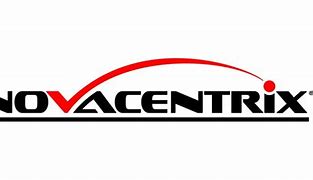We are changing our name from Blue Wolf to QIC Global
We are changing our name from Blue Wolf to QIC Global
Implement an effective anti-bribery management system by achieving the ISO 37001 standard. Find an applicable set of clauses to identify, analyze, and prevent bribery. Address the potential threats by promoting a culture of ethical business conduct. Comply with the regulatory terms and conditions for anti-corruption with the ISO anti-bribery benchmark. Establish transparent policies to strengthen integrity.





ISO 37001 is the global standard that sets the reference guide for detecting, addressing, and preventing organizational bribery and corruption. The benchmark aims to assist in establishing, implementing, maintaining, reviewing, and subsequently improving the anti-bribery management system. Companies regardless of their size and type (profit, non-profit, large, small) can adopt the standard. ISO 37001 is essential for maintaining anti-bribery compliance.
Companies can effortlessly handle corruption by adopting the anti-bribery management system of ISO 37001. Also, the standard assists in adhering to government regulations to control corporate bribery. With the standard in place, a company can accomplish the following organizational practices in a hassle-free manner -

ISO 37001:2018 provides the basis for a successful Anti-Bribery Management System (ABMS). To comply with this, organizations are expected to:
The typical problems that are encountered during the audit may include:



“I want to express my sincere appreciation for your support during our recent ISO audit.”


“One of the best business decisions I think we've made in the entire time we've been here in the company.”


We make auditing your ISO Standards easy. We know audits can be stressful. We’ll take the stress out.


“What seemed like a very intimidating process … was made simple … and [has] elevated our quality and safety program to another level.”


“…our staff feel comfortable talking to [the auditor]… makes you feel like you are working together”


“…Relaxed, didn't feel pressured..."


“I would just say, if you want the best and you want to things done quickly and accurately that I’d go with Blue Wolf. The service was great. Again, just to the point, very speedy, not a lot of fluff around things. We just got to work and got it done and that was the objective.”


“Your approach [to the audit process] is by far superior than any other audit I’ve ever been through. The contrast was night and day”


“There was so much going on at the time of the audit that I just wanted to go back to the audit, it was more relaxing”


“I don’t ever want to experience an audit a different way”


“If everybody could have an audit experience like this, more and more people would actually consider an ISO certification”


“I learned a whole lot from what we just went through with [the auditor] that I didn’t even understand about the standard before”


“Our experience has been that this process in working with the auditors has shown us more ways to improve internally than what we expected”


“What seemed like a very intimidating process … was made simple … and [has] elevated our quality and safety program to another level.”


“…Relaxed, didn't feel pressured..."


“…our staff feel comfortable talking to [the auditor]… makes you feel like you are working together”


“It’s a very smooth and very clear process. Definitely recommended.”


"The auditor was very knowledgeable, very understanding, very helpful."


“Would give them a 10 out of 10 and would highly recommend them to anybody looking to get ISO certification in the future.”


“I found Blue Wolf to be the Cheapest and most experienced in my eyes ‘cause all of the price ranges were higher than Blue Wolf, so I stuck with Blue Wolf. Their quality was very high as well.”


“The service provided by Blue Wolf has been second to none.”


“Blue Wolf streamlined the entire process. They were very easy to communicate with and work with, very cordial, and just an all-around good experience.”


“Blue Wolf makes a great partner for not only getting but maintaining your ISO certifications.”
Quality Management Systems
Environmental Management Systems
Occupational Health and Safety Management Systems
Information Security Management Systems
The Information Technology (IT) Service Management System Standard for earning global recognition!
Global Quality Management Standard for Medical Devices
Energy Management System efficiency
Food Safety Management Systems
Anti-Bribery Management System
Business continuity management system
The Privacy Management Standard for corporate documents
The education management standard for a better learning experience!